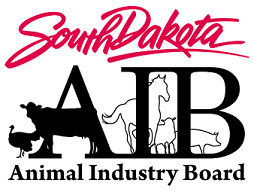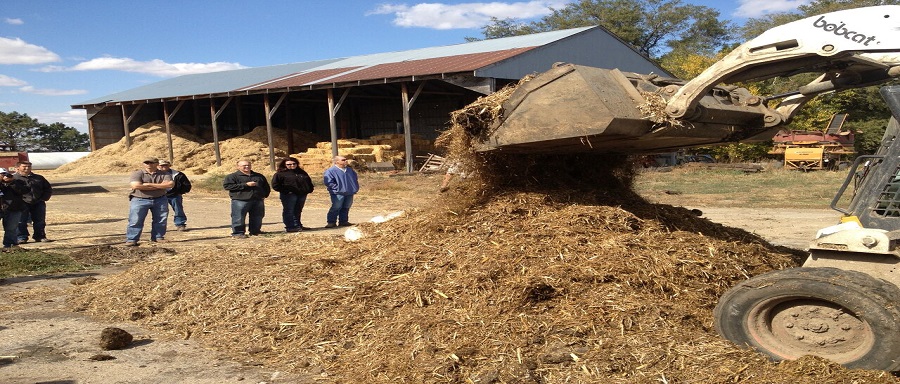Carcass Disposal
Overview
Mortalities occur in livestock production. Proper disposal of animal carcasses is an important part of preventing the potential spread of disease and protecting the environment. South Dakota law requires carcasses of animals which have died from non-communicable causes shall, within 36 hours, be burned, buried to a depth of four feet, incorporated into a composting system, or disposed of by a licensed rendering plant.
The following are some good management practices and resources to aid producers in ensuring that livestock carcass and other associated wastes are disposed of responsibly in an environmentally-safe manner.
Burial
Burial is an inexpensive and bio secure way to handle dead stock.
- Call before you dig | SD One Call 1-800-781-7474 or Dial 811
- Avoid areas with sand and gravel
- Minimal setbacks should be:
- 1,000 feet away from surface water or the boundaries of a floodplain or a river
- Outside a wetland
- 1,000 feet from an occupied dwelling
- 1,000 feet from any private or public drinking water well
- 200 feet from a road right-of-way or property boundary (without permission of adjacent property owner)
- Greater than 20 feet above an aquifer (from the bottom of the burial trench)
Burial Resources:
Onsite Burial Handout
Composting
Composting is also an inexpensive and environmentally-friendly way to dispose of animal carcasses. When done correctly, composting results in a usable material that can be applied to fields.
Elements needed to start and maintain a successful compost pile include:
- A carbon source, such as sawdust, wood chips, chopped straw or corn husks to layer on the bottom of the pile and cover the carcasses with
- Nitrogen (found naturally in manure)
- Carcasses
- Water - composting experts say the number one mistake made is not keeping the pile wet enough; it may be nice to have a nearby water source
- Regular temperature monitoring, the temperature of a pile should rise within 24 hours of initiating
- Turning the pile to add oxygen when the temperature begins to drop
Composting Resources:
Carcass Disposal/Composting Handout
Burning/Incineration
Incineration is a cold-weather alternative to burial, but a more costly method of carcass disposal.
- Notify the local fire departments prior to initiating
- Site should be a minimum of 1,000 feet from an occupied dwelling, propane tank, fuel tank, or other container storing flammable substances.
- Should take place only during appropriate weather conditions.
- The smoke plume should be monitored not to impact neighbors, or highway and airport traffic.
- DO NOT USE fuels such as tires, railroad ties, or treated wood
Site Selection
Take into consideration access to the site in varying climatic conditions. Carcass disposal sites should be aesthetically acceptable, consider proximity to roadways and the viewing public.
Rendering
Rendering is an excellent option for the utilization of animal proteins for carcasses that cannot enter the food chain. Availability of rendering services in South Dakota can be somewhat limited.
Vehicles that haul carcasses for rendering services need to be inspected and permitted by the Animal Industry Board. To prevent disease spread and sanitation purposes, carcasses and animal parts are transported in leak-proof vehicles or containers that are covered. Please see the table below to find companies providing rendering hauling services in South Dakota.
- Central Bi-Products | PO Box 319 | Redwood Falls, MN 56283 | 507.644.6951 | dhildebrandt@fuillc.com
- D & J Rendering | 1219 61st St | Luverne, MN 56156 | 507.283.2553 or 507.920.5469 | dandjluverne@gmail.com
- Dakota Rendering | 50757 Wellington Rd | Ewing, NE 68735 | 605.553.3028 or 605.553.3030 | retta005@hotmail.com
- Lindell Trucking | 21854 434th Ave | DeSmet, SD 57231 | 605.203.0377 | Patrick.linell@gmail.com
- Sioux Valley Rendering Company | 2340 310th St | Rock Valley, IA 51247 | 712.476.9800 or 712.476.2405 | tbpostma@premieronline.net
Additional Resources
Iowa State University the Center for Food Security & Public Health – Just-in-Time Training (JIT) for Responders to Animal Health Emergencies
Kansas State University – Carcass disposal: A comprehensive review
Livestock and Poultry Environmental Learning Community – Managing Animal Mortalities Curriculum Materials
National Pork Board – Tools for Pork Producers
The Science Source for Food, Agriculture, and Environmental Issues – Swine Carcass Disposal Options for Routine and Catastrophic Mortality
USDA/APHIS
Veterinary Compliance Assistance – Carcass Disposal Information


For Additional Information
Please Call 605.773.3321